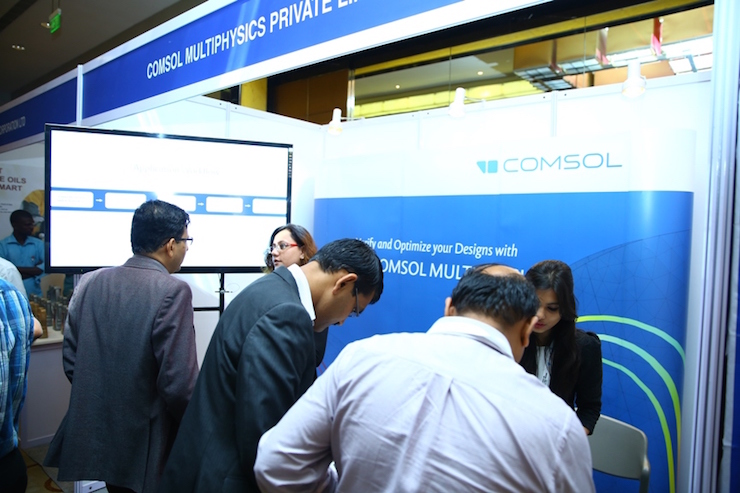
Last month, researchers and developers gathered in Chennai, India for the 7thannual Conference on Automotive R&D Trends. Emphasizing the importance of research and development in India’s automotive industry, this year’s theme was “Towards Strengthening Indian Automotive R&D”. At the conference, our Managing Director Vineet Dravid presented a new approach to product development. He was joined by David Neihguk of Mahindra & Mahindra, who discussed the role of COMSOL Multiphysics in optimizing their muffler design.
A Growing Industry
With a rise in the demand and production of automobiles, the automotive industry in India has experienced tremendous growth over the years. As the number of vehicles in production increases, there is a greater pressure to support a variety of product designs as well as shorten product life cycles. This has prompted research and development efforts to support India’s automotive industry, ensuring that it maintains pace with other global markets.
The Conference on Automotive R&D Trends is designed to steer these efforts in the right direction. The event serves as a forum in which the expectations and challenges behind the growth and productivity of India’s automotive industry are addressed. By indicating areas for improvement, the conference enables researchers and developers to assess important factors in automotive research.
Innovative Tools for Lean Product Design
Our presentation at the Conference on Automotive R&D Trends centered on lean product design and development. In today’s globally competitive market, industries need to adopt lean processes to reduce product life cycles. As noted in Dravid’s speech, a key component in facilitating such design is the adoption of computer-aided engineering (CAE) tools. These tools provide users with the flexibility to design and simulate products from the ground up, at a faster rate than conventional approaches, which can be quite lengthy.
During the presentation, Vineet Dravid particularly emphasized the Application Builder — a revolutionary product first introduced in COMSOL Multiphysics version 5.0 and updated inversion 5.1— and its role in enhancing simulation capabilities. With the Application Builder, users can create multiple customized apps of an existing model in COMSOL Multiphysics. These applications can then be distributed to both colleagues and customers, who can run their own simulations and test the impact of different parameters on the design. By making simulation accessible to anyone involved in the product development life cycle, the Application Builder is a valuable resource for increasing overall efficiency and productivity.
A Practical Example: Optimizing a Muffler Design with COMSOL Multiphysics
Following the speech, David Neihguk took the stage to discuss how he and a team atMahindra & Mahindradeveloped an innovative approach to optimizing the design of an exhaust muffler. The primary objective of the team’s simulation research was to optimize the perforated pipe diameter of the muffler in order to reduce the excessive back pressure acting on the engine. When analyzing the system, it was found that the friction factor of the perforated pipe was unknown.
With the help of COMSOL Multiphysics simulation software, Neihguk and his colleagues evaluated the friction factor of the perforated pipe using a 3D model. The results from this analysis were later applied to the development of a 1D reduced-order model. By applying the simulation power available in the COMSOL Multiphysics environment to the initial analysis, the team was able to arrive at an optimized solution in just a few hours — a process that would have otherwise taken them at least three months if they had used conventional approaches.
Additional Highlights from the Automotive R&D Trends Conference
In addition to the presentation, we also had the opportunity to engage with conference attendees at our booth. We received a great response overall, with many delegates stopping by to learn more about COMSOL and our software. It was a pleasure to interact with so many researchers and developers and gain an understanding of their particular areas of interest.

A photo shows delegates interacting with COMSOL staff at the automotive R&D trends conference.
We would like to thank everyone who attended our presentation as well as those who took the time to visit our booth. The conference was a great experience for those of us at the Bangalore office. We look forward to continue being a part of this event in the years ahead!



Comments (0)